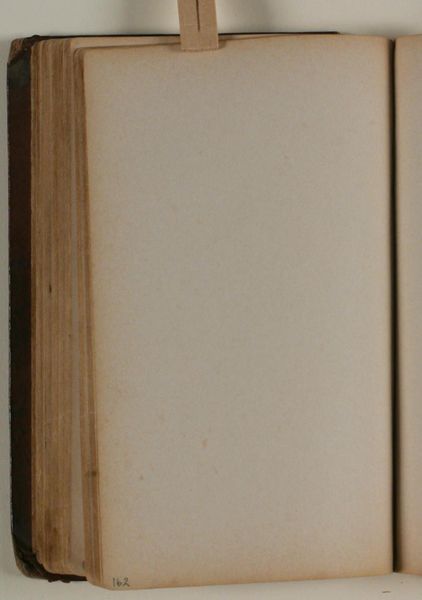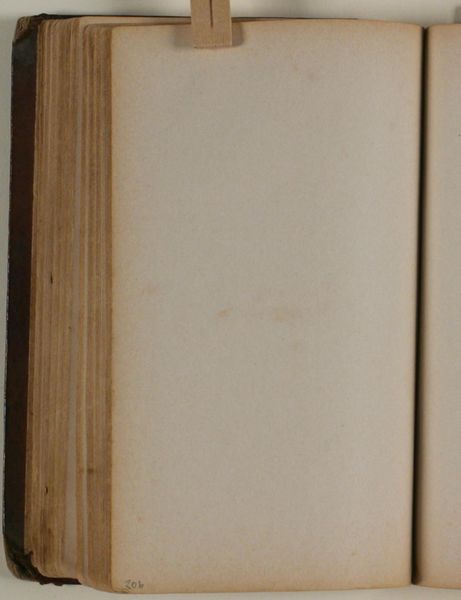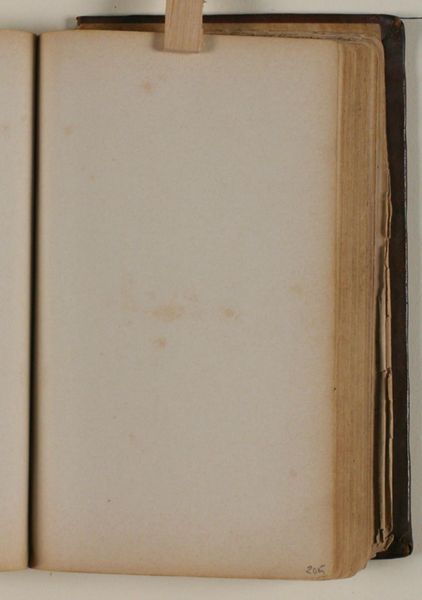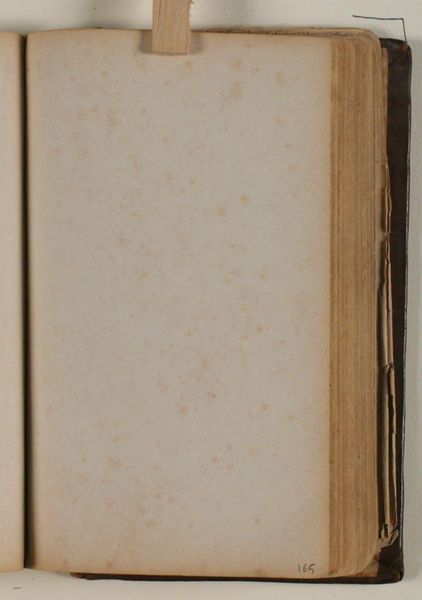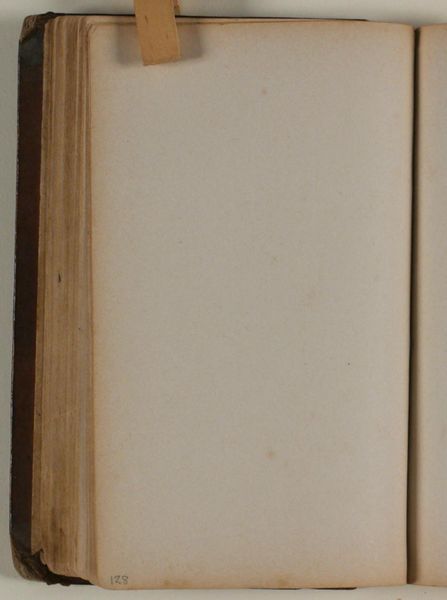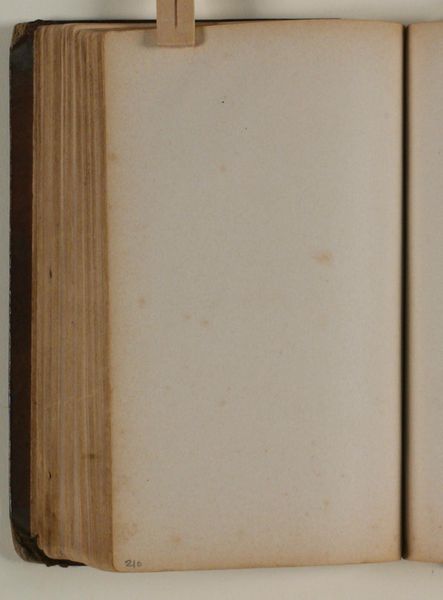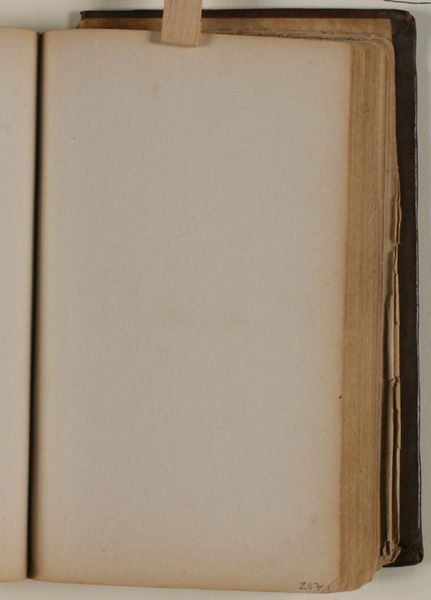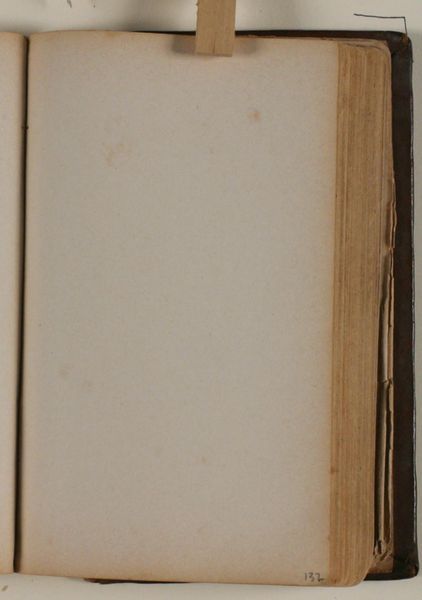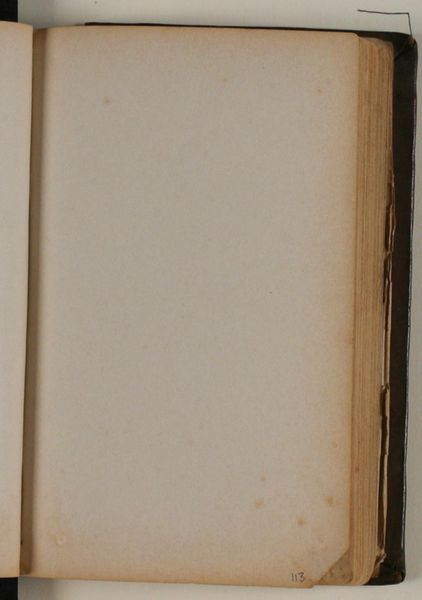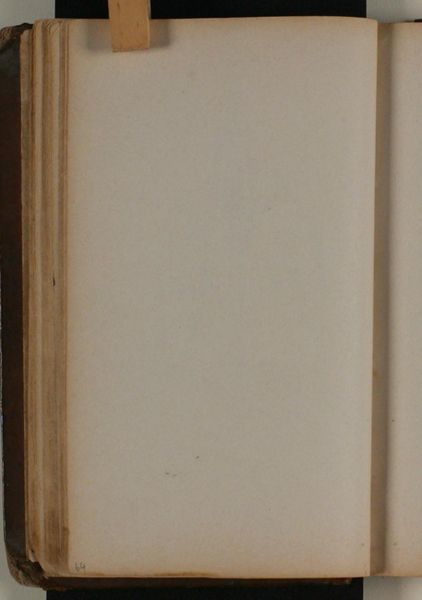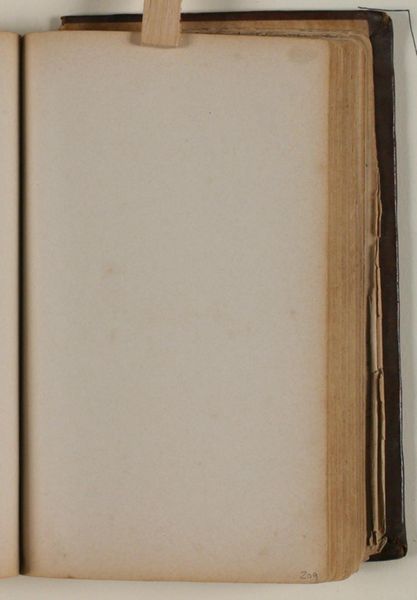
drawing, paper
#
drawing
#
paper
#
coloured pencil
#
watercolor
Editor: We're looking at "Blank" by Niels Larsen Stevns, created sometime between 1864 and 1941. It’s a drawing on paper, using coloured pencil and watercolour, housed at the SMK in Copenhagen. Looking at this close-up of open pages in an aged book, I'm immediately struck by the quietness of it. It's...anticipatory, almost? What do you make of such a minimalist piece? Curator: Well, the very blankness becomes the point. Considering Stevns's historical context, this piece enters a conversation with evolving notions of artistic intent and reception. Was it displayed publicly? How might the artistic circles of his time reacted to a ‘Blank’ drawing in watercolour and coloured pencil? Think of it less as emptiness and more as potential. Editor: Potential for what exactly? Does the artist expect someone to fill it in? Curator: Perhaps, but also consider the socio-political climate. Was there a freedom of expression, or a censorship context that might make the ‘unsaid’ the most potent message? The politics of imagery plays here. The blankness also challenges the role of art institutions. Is a blank page in a museum mocking the very idea of curated display, questioning what deserves to be seen and valued? Editor: So, is it rebellious? A silent protest perhaps? Curator: It might be. Or perhaps a commentary on the expectations placed upon art to 'say' something, to communicate a message directly. The art speaks through its refusal to illustrate, leading the viewers to consider the many possible reasons and contexts of production. How does this reflection shift your perspective of the piece now? Editor: It makes me think about the power of suggestion, of what's not there. The viewer completes the piece by interpreting the silence. That's much more compelling than a fully realised image, actually. Curator: Precisely. Its ambiguity is what invites engagement. And considering how it fits or doesn't fit into art history shows us a lot about the cultural narratives being constructed around the act of creativity.
Comments
No comments
Be the first to comment and join the conversation on the ultimate creative platform.
